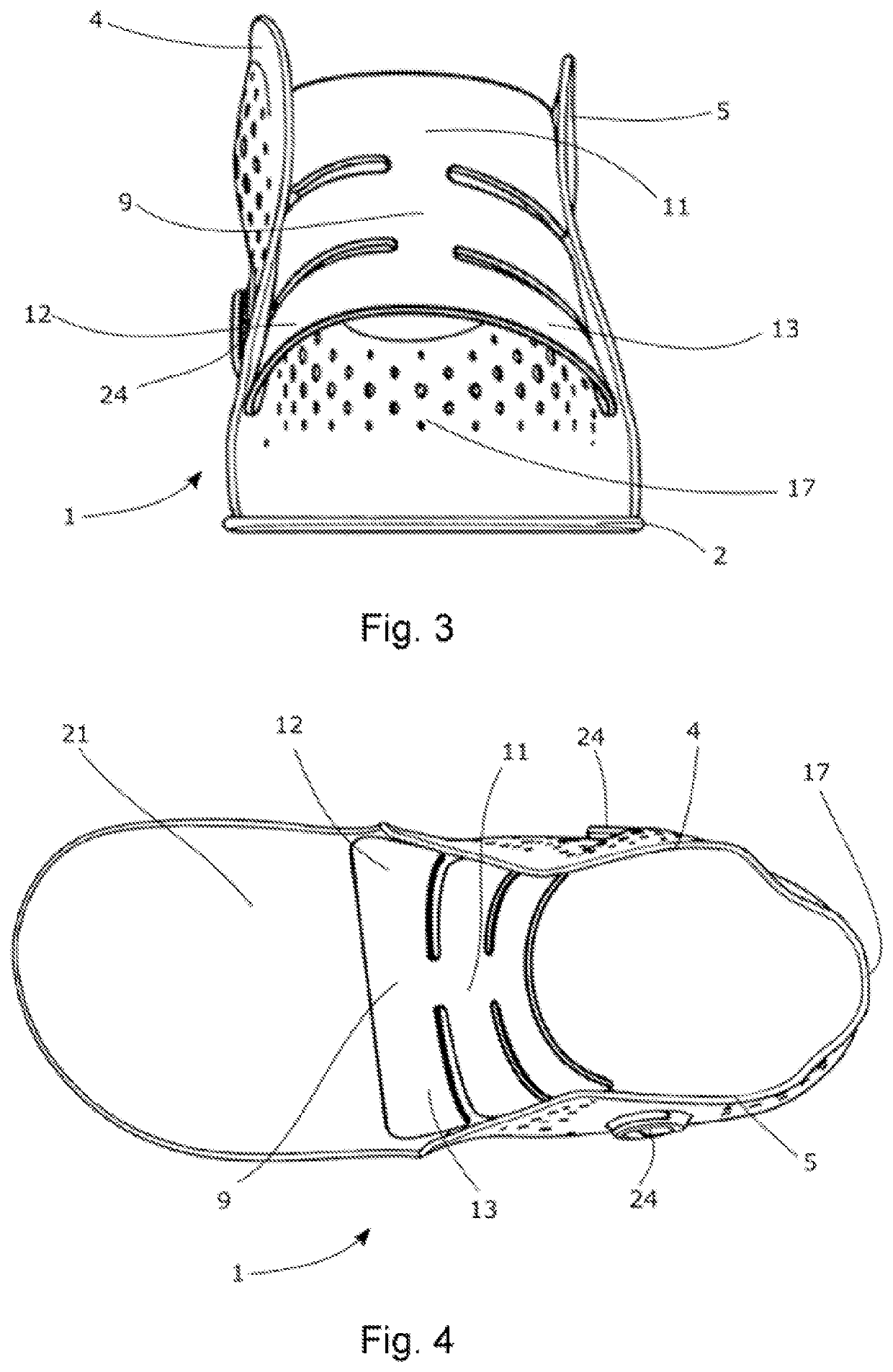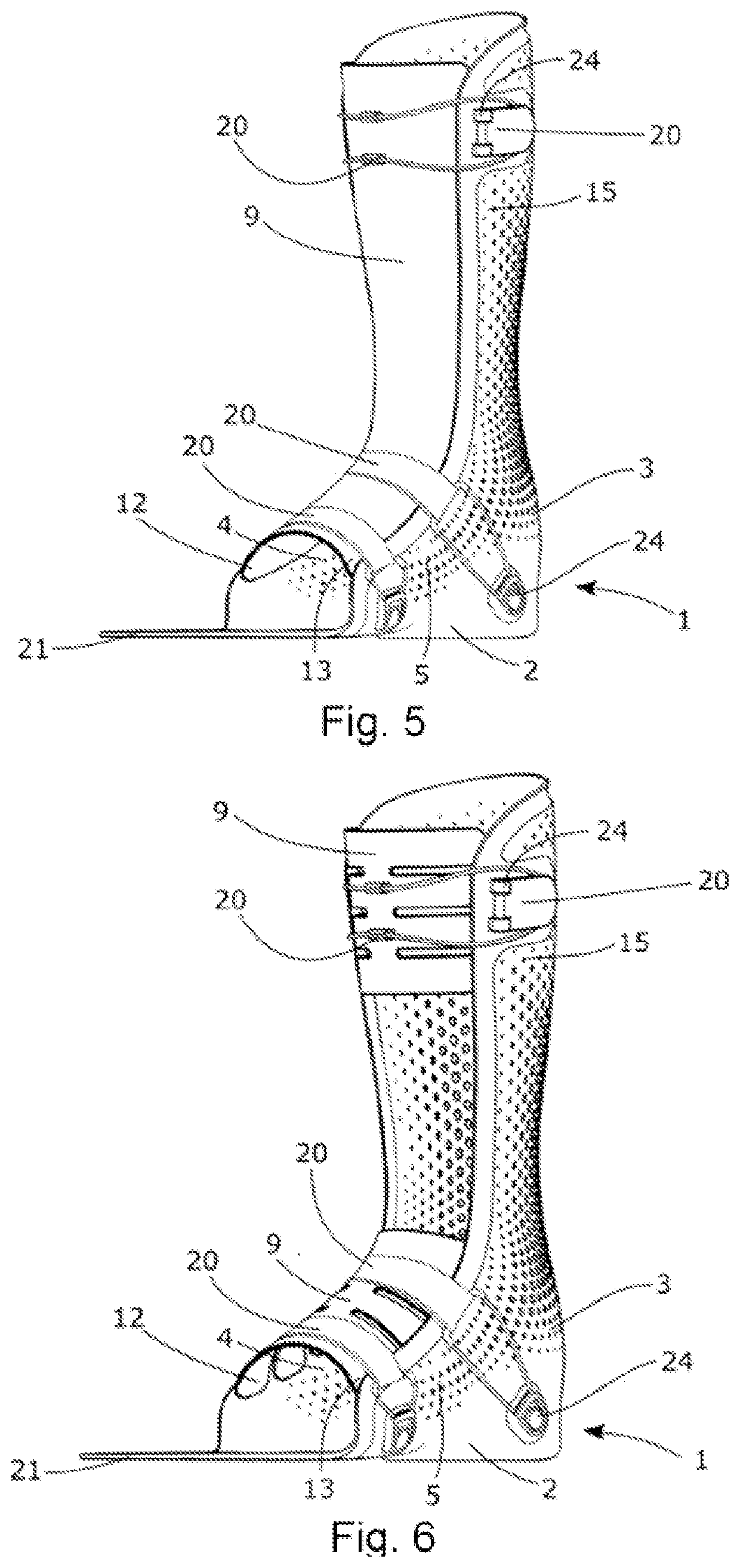3D Printed Ankle And Foot Orthosis And A Method Of Production Of The Same
a technology of 3d printing and ankle and foot, which is applied in the field of 3d printing ankle and foot orthosis and a method of production of the same, can solve the problems of insufficient softening, complicated production method, and complications in the use of the orthosis, and achieve the effect of increasing the flexibility of the central par
- Summary
- Abstract
- Description
- Claims
- Application Information
AI Technical Summary
Benefits of technology
Problems solved by technology
Method used
Image
Examples
Embodiment Construction
[0051]Exemplary embodiments of the invention of the 3D printed orthosis according to the exemplary embodiments will be explained herein with reference to the corresponding drawings.
[0052]Some terms used in the description of the exemplary embodiments of the invention and their function will be explained herein. The tread surface is the surface with which the patient's foot is in contact when the patient's foot treads and via which the patient's weight is transferred to the outer surface or orthosis. The lateral ankle region 8 is the region of the projecting outer surface of the ankle, which is caused by the presence of the lateral ankle or the projection of the fibula. The medial ankle region 7 is the region of the projecting outer surface of the ankle, which is caused by the presence of the medial ankle or the projection of the tibia. By the level 25 of the ankles is meant the axis passing through the top points of the medial ankle and lateral ankle. By the hindfoot 27 is meant the...
PUM
 Login to View More
Login to View More Abstract
Description
Claims
Application Information
 Login to View More
Login to View More - R&D
- Intellectual Property
- Life Sciences
- Materials
- Tech Scout
- Unparalleled Data Quality
- Higher Quality Content
- 60% Fewer Hallucinations
Browse by: Latest US Patents, China's latest patents, Technical Efficacy Thesaurus, Application Domain, Technology Topic, Popular Technical Reports.
© 2025 PatSnap. All rights reserved.Legal|Privacy policy|Modern Slavery Act Transparency Statement|Sitemap|About US| Contact US: help@patsnap.com



